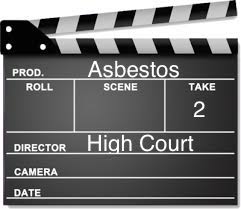It’s only logical: Davies v University Hospital of North Staffordshire [2014] EWHC 4004 (QB)
Case Background
This was a claim against the Defendant NHS Trust for failure to arrange a brain scan (either a CT or MRI) on two occasions in early 2001. The Claimant subsequently underwent a scan which revealed the presence of a tumour located in the frontal section of the brain. It was accepted by the parties that had a scan been undertaken on the dates in question (the 6th and 28th January 2001) the tumour would have been identified and that it could not be said that the tumour was the cause of her symptoms at that time.
The Claimant had a history of severe headaches which, on occasion, were accompanied by vomiting. On the 6th January the Claimant was suffering from a severe headache (indeed it was the evidence of her mother, which was accepted by the judge, that she was screaming in pain) so was taken to A&E by her mother. On that occasion the records note that the Claimant was vomiting and that antibiotics were prescribed for a sinus infection. Further information was recorded which suggested that the Claimant was vomiting because of the antibiotic prescribed (ciproxin) on a previous visit to hospital where the Claimant was diagnosed as suffering from sinusitis. A discharge summary was sent to the Claimant’s GP which recorded the treatment of Augumentin for 1 week; Augumentin being an antibiotic used for the treatment of sinusitis.
On the 28th January 2001 the Claimant again complained of a terrible headache. The Claimant’s mother took her to see the out of hours doctor on two occasions that day. The Claimant was referred to the paediatric ward and was admitted with vomiting and a headache for 24 hours. The judge found as a fact that the treating doctor (Dr Rao) did consider the possibility of an underlying neurological condition as the notes identified that there was no evidence of morning headaches. In addition, Dr Rao investigated the fundus and found no signs of papilloedema. It was concluded that the Claimant was suffering from either a migraine or sinusitis. The notes advised a follow up by the Claimant’s GP and that a referral to an ENT specialist may be necessary.
Between the 29th February and November 2001 (when the Claimant was diagnosed as having a brain tumour) the Claimant had several further severe headaches which necessitated medical attention. In September 2001 the Claimant spent a further short period in hospital where again it was suggested that sinusitis was the cause and that neurological problems were discarded. The Claimant’s notes record that a CT scan should be considered if there were no clinical signs of sinusitis. The circumstances changed dramatically in late October when the Claimant was again admitted to hospital and a fundoscopy was carried out which revealed a blurred outline (suggesting raised intracranial pressure). In response an MRI was urgently requested which confirmed the presence of a tumour.
Lewis J rejected the Claimant’s argument that the Defendant had failed to exercise reasonable care by not arranging for a brain scan to take place on either the 6th or 28th January 2001. In reaching this decision Lewis J preferred the evidence of Dr Koyar for the Defendant and reasoned that the action taken by the Defendant accorded with the standard practice for children who presented with headaches and that all options had been considered when the Claimant was examined.
Contributor Comments
This is by no means a ground breaking decision but it does illustrate the difficulty Claimants can face when attempting to overcome the Bolitho threshold (Bolitho v City and Hackney Health Authority [1998] A.C. 232). As is invariably the situation, when a case is before the court there will be expert evidence which supports both the Claimant’s and Defendant’s case and it is unlikely that such evidence will be considered to be unreasonable in a Bolam sense. In such a case the court is presented with the task of deciding which opinion is considered logical and that will invariably depend upon an accurate understanding of the facts as they unfolded. The decision in Davies is a classic example of one expert giving their opinion without due regard to the facts; this was a key aspect of Lewis’ J reasoning when he stated:
“In my judgment, the opinion of Dr Conway as to what professional practice would have mandated on 6 January 2001 is based on an assessment which does not accurately reflect the facts as they existed and were known, or ought to have been known, by the doctor involved.”
…
“Dr Conway gave evidence which was that further investigations, including arrangements with a view to a brain scan, were mandated on 28 January 2001 and that the failure to make these arrangements meant that the treatment received fell below the standard of care which Tracy could reasonably expect from a competent practitioner. Again, that opinion is not, in my judgment, accurately based on the facts as they were known, or ought to have been known, to the treating clinician on 28 January 2001.” (At paragraph 55 and 61 respectively.)
In such a situation it is not surprising that the opinion was not considered to be logical. In assessing what is, and is not, logical the medical notes will often be of great assistance. It is illustrative that in Davies both experts agreed that no criticism could be made of the notes. The importance of full notes has been stressed by the court time and time again (for example Skelton v Lewisham & North Southwark HA [1998] Lloyd’s Rep. Med 324). When faced with a set of poor records, and competing expert opinions, that opinion which supports the record is less likely to be viewed as logical; in contrast the opinion which supports a detailed set of notes is more likely to be seen as logical.
A final interesting (albeit hypothetical) point is raised by the decision. Limitation was not in issue before the court but imagine the situation if it were. In the normal course of events, a Claimant seeking to rely on section 33 will be faced with a counter argument that the fact (as in this situation) that a witness cannot be located prejudices the Defendant (see the House of Lords decision of Horton v Sadler [2006] UKHL 27 for a detailed discussion of prejudice under section 33). However, in the present situation, because the medical notes are detailed, the Claimant’s position is in fact weakened by the inability to cross-examine the witness. This issue was touched upon by the High Court in the case of Rogers v East Kent Hospitals [2009] EWHC 54 (QB) on appeal from the Canterbury County Court. It was argued, and accepted, before Griffith Williams J that no prejudice existed despite one doctor not being located as the records were extensive and an expert report could be produced from them without difficulty. With that in mind, Defendants should be mindful of the difficulties surrounding section 33 where a practitioner cannot be located; equally, they should be alive to the possibility of situations where detailed notes strengthen their position through the inability to cross-examine the practitioner.











